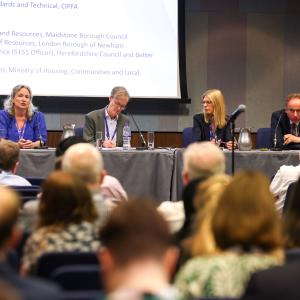Social housing tenants are at the sharp end of government cuts. But with adequate government support, social landlords can help their tenants come up with coping strategies
It’s not a good time to be a social tenant. With talk of 'pay to stay' so higher earners are charged higher rents, housing benefit caps and under-occupation rules being applied to the sector next year, some of the lowest income, most vulnerable households are faced with significant financial uncertainty and the prospect of having to move home. This is in addition to the spectre of economic downturn, which brings with it the threat of redundancy and widespread service and benefit cuts.
And with all of this talk of 'high earning' and 'under occupying' social tenants, one might be mistaken for thinking we have social housing stock full of wealthy baby boomers with two spare bedrooms after their children have left the nest. In fact, we’re talking about single parents, disabled people living independently with support, and vulnerable older people. 44% of England’s single parents live in social housing and the average gross weekly income of social renting couples is just £291 per week compared to £552 per week for private renting couples. Nearly two-thirds of private renters, but less than one-quarter of social housing tenants work full time. 21% of people over 65 and 24% of people aged 75 or over live in social housing.
This concentration of disadvantage is by design not default – priority for social housing is, quite rightly, given to those about to be made homeless, those with medical conditions made worse by where they live, those at risk of violence, and so on. Even the 42% of tenants not receiving any additional support services have at least one indicator of 'vulnerability', such as previous homelessness or poor mental health.
It is hardly surprising, then, that social tenants are at the sharp end of government cuts. And social housing providers – landlords providing bricks and mortar – are offering an increasing range of services to help their tenants cope. Yet the funding previously available to do this is also being cut off – leaving landlords in an unenviable position of having more demand, and fewer resources to meet it.
This requires some lateral thinking. 'Doing more for less' is a hackneyed phrase, but when you've got unprecedented knowledge of and links with a veritable army of social tenants, getting more for less really can be achieved by leveraging untapped skills, fostering self-organisation and support networks. Demos’ research, launched in May, found social tenants were enthusiastic about the prospect of getting involved, volunteering, and forming groups with fellow tenants – they wanted to show new tenants the ropes, and settle them in. Why not take this further, with befriending services, employment support, time banking, and so on?
But of course, these sorts of innovations have their limits. Social landlords can do more for less, but not for nothing. At some point, they must look for new funding opportunities in service delivery. Whilst funds are being diverted from traditional pots, other ones are springing up in line with government priorities. From grants for so-called 'troubled families' to digital inclusion and welfare to work, there are new areas where social landlords’ knowledge of and reach among groups of very disadvantaged people puts them ahead of rival providers.
They should be the first in line for any prevention funding in social care, public health or probation services, due to the strong relationships they have with these schemes’ target groups. Who else gets so close to people, literally and figuratively, on an everyday basis? Who else gets into peoples’ homes so frequently, where lots of these problems start? £162 million is being ploughed into reablement services for example, to help older people discharged from hospital settle back home quickly. Demos is now exploring, in a report launched later this month, whether the 50% of social landlords already offering care services could tap into this pot and demonstrate to clinical commissioners how they might deliver reablement more effectively than their care counterparts. We think this is another big opportunity to expand into an area – and tap into a new funding stream – where social housing staff could excel.
For a long time, social housing providers have been offering a flexible range of services in a person-centred way, based on the deep knowledge of and trusting relationships they build with tenants over many years. It’s just the sort of approach the government is looking for in everything from health and criminal justice to employment and skills. If social landlords can learn to articulate their unique strengths to commissioners, a whole world of possibilities will open up.









